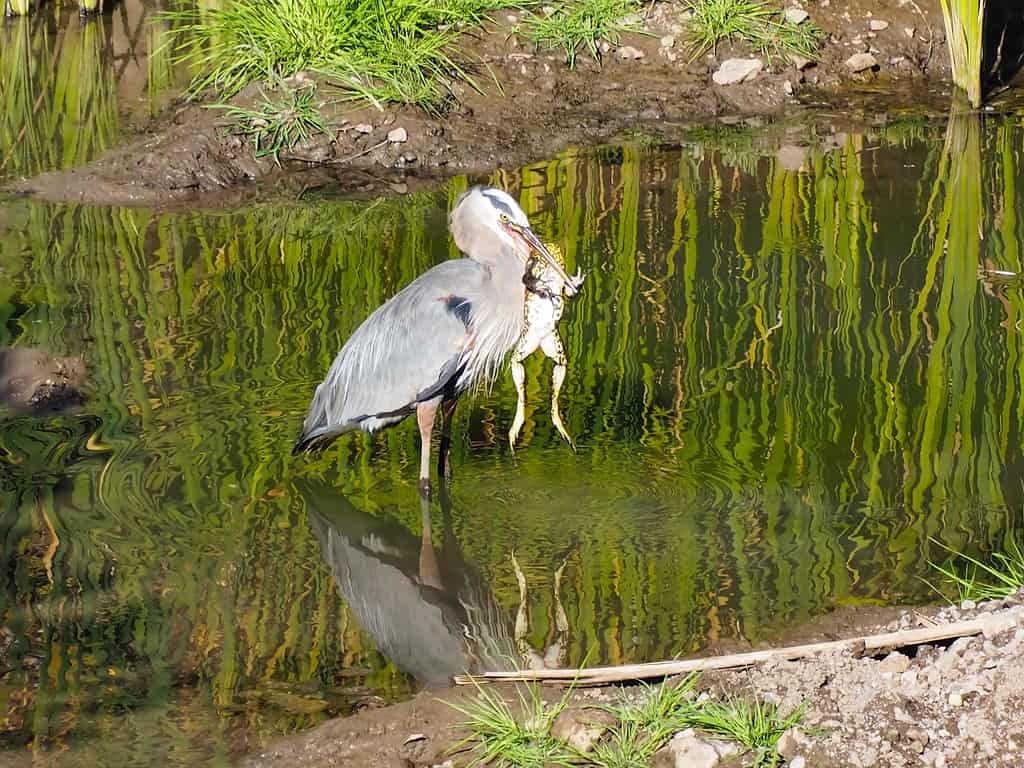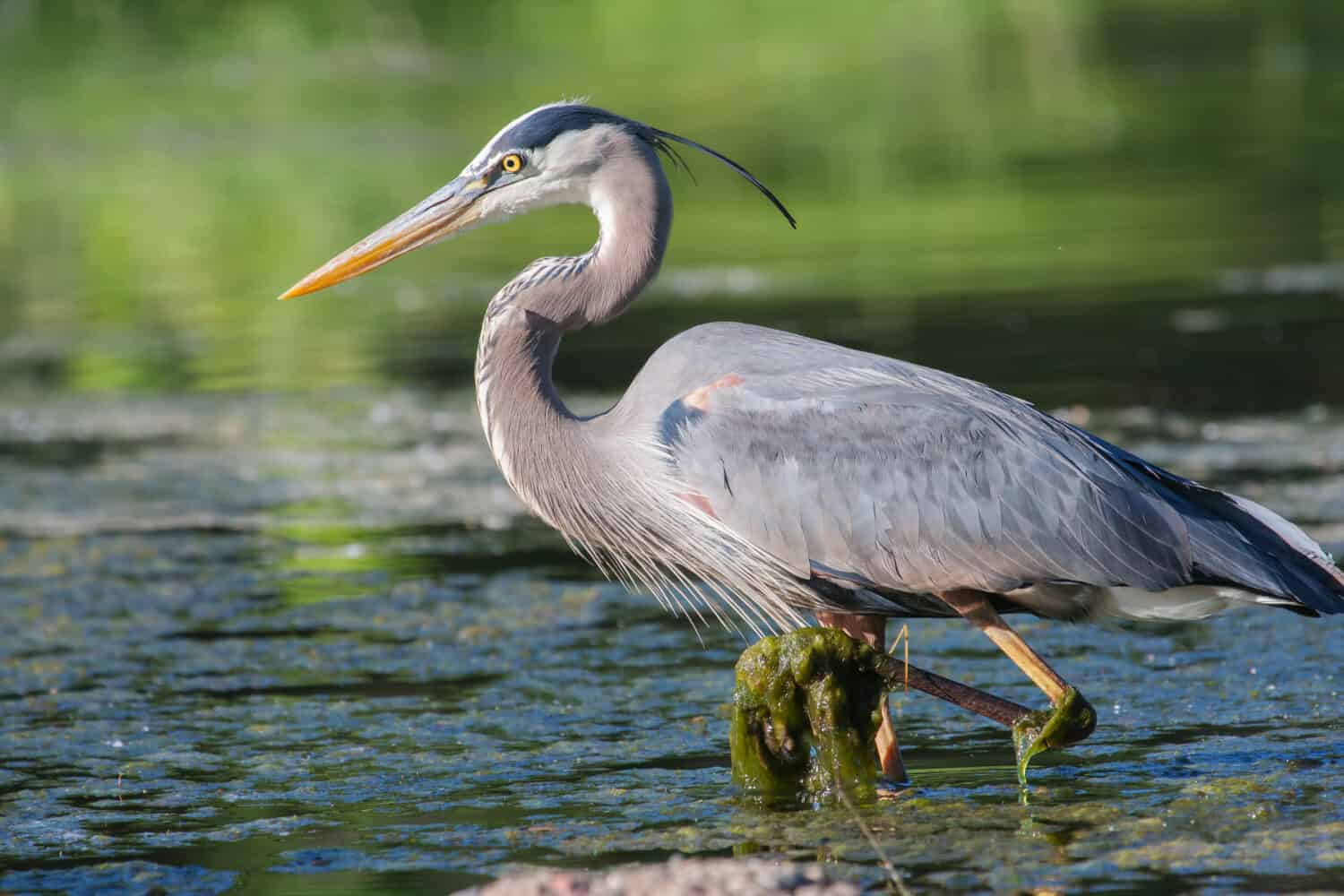American alligators are large and powerful hunters and are usually the apex predators in their environments. They can hunt animals larger than themselves and humans are the only animal that presents a significant threat to an adult alligator. The situation is very different for babies! Baby alligators are vulnerable to predation by raccoons, bobcats, and other alligators, and as we see in this clip, great blue herons!
The footage was captured at the Florida Wildlife and Exotic Animal Sanctuary and Rehabilitation Center just northwest of Orlando. It shows an ambitious great blue heron choosing a baby alligator as a snack. It takes quite a lot of time and effort but eventually, the bird manages to swallow the reptile whole!
Watch the Impressive Clip Below
Where Do Great Blue Herons Normally Live?
These magnificent birds are a member of the Ciconiiformes order which also includes storks. They are the largest herons in North America and can stand up to 23 inches tall and weigh over 5 pounds. During their breeding season, they are found in North and Central America, the Caribbean, southern Canada, and the Galapagos. In the winter, however, some populations migrate to Central and South America. However, they do not breed there.
When it comes to habitats, you will always find great blue herons near water. This means that you may spot them near rivers, lakes, and marshes. They can also be found around saltwater seacoasts and saltwater swamps. They also need a habitat that contains tall trees because this is where they build their nests. Some great blue heron nests are extremely high!
What Do Great Blue Herons Normally Eat?

Great blue herons sometimes try to swallow large prey!
©iStock.com/jodiofca
The majority of a great blue heron’s diet is made up of fish. They are most active in the morning and at dusk when fishing is best. However, as is clear in this clip, they will also target young reptiles including baby crocodiles and lizards. Great blue herons have also been seen eating frogs, snakes, young birds, and even small mammals. They are experts at catching shrimp and crayfish. Insects are also found on their menu and many of them will eat dragonflies and grasshoppers.
Their hunting method is to wade into shallow water where they wait to spot something suitable to eat. Then, they use their long sharp beak to spear the unfortunate prey. The next issue is to position the prey so that they can swallow it whole! They can be over-ambitious when it comes to choosing a snack and herons have been known to choke on prey that is too large for them!
Thank you for reading! Have some feedback for us? Contact the AZ Animals editorial team.








